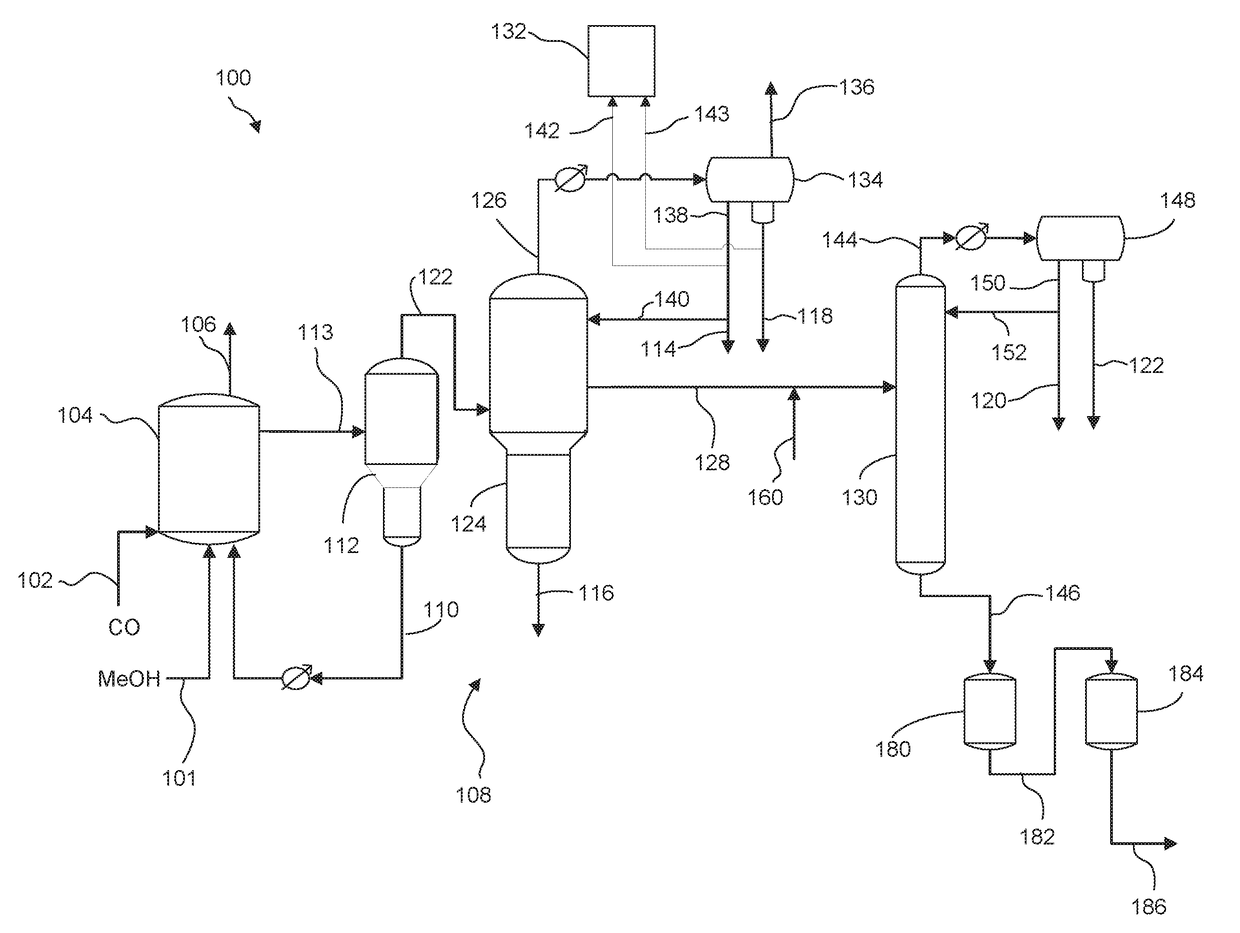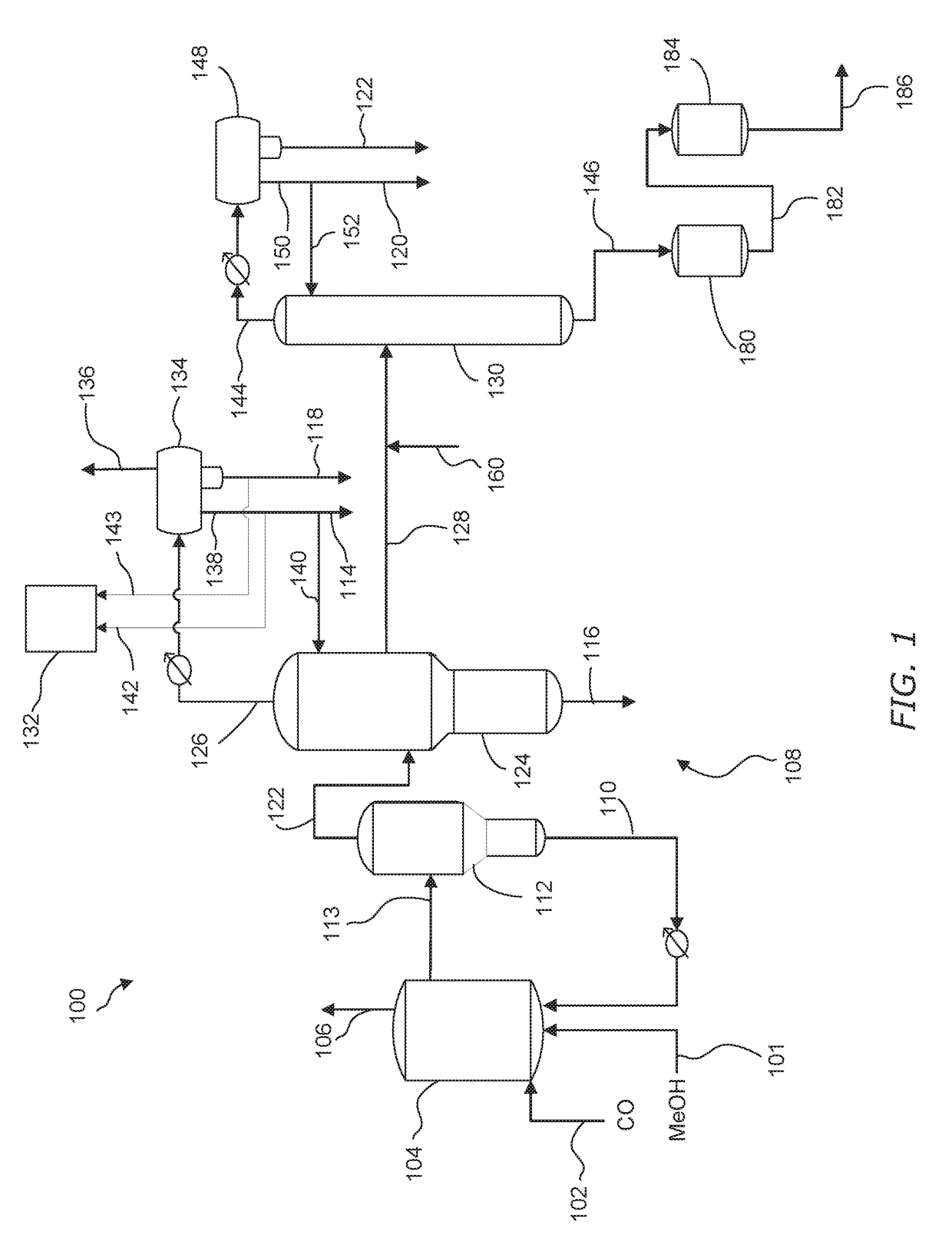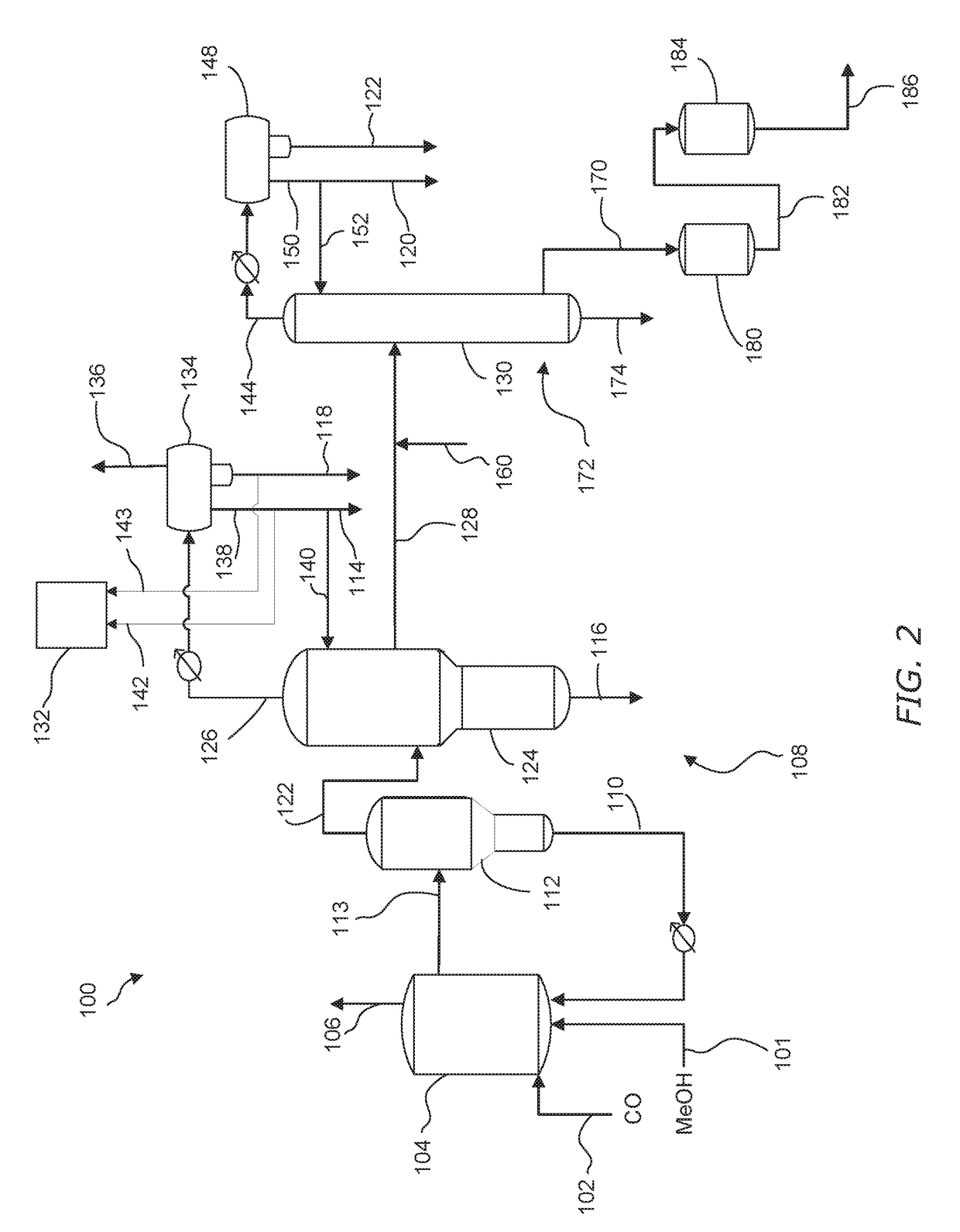Processes for purifying acetic and hydrating anhydride
a technology of acetic acid and hydrating anhydride, which is applied in the preparation of carboxylic compounds, carbon monoxide reaction carboxylic preparations, organic chemistry, etc., can solve the problems of increasing the cost of the process, reducing the and reducing so as to achieve greater production rate of acetic anhydride and reduce the concentration of acetic anhydrid
- Summary
- Abstract
- Description
- Claims
- Application Information
AI Technical Summary
Benefits of technology
Problems solved by technology
Method used
Image
Examples
example 1
[0131]A stream comprising acetic acid, less than 2 wt. % water, and acetic anhydride that varied from 123 to 510 ppm was fed to a column filled with Ag functionalized sulfonic resin at 8 bed volume per hour flow rate. The temperature of the resin was controlled at 75° C. The acetic anhydride concentration in the inlet and outlet of the resin column were measured by a gas chromatograph (GC) equipped with a flame ionization detector. A capillary column with dimethylpolysiloxane stationary phase was used to achieve separation in the GC analysis. Results for experiments 1-3 are shown in Table 4.
[0132]
TABLE 4Flow Through Experiments Performed at 75° C.Experiment No.Inlet Conc., ppmOutlet Conc., ppm112322235235101
example 2
[0133]Experiments 4-6 were performed with the same procedures and setup as Example 1 except the initial acetic anhydride concentration varied from 171 to 574 ppm and the resin column temperature that was controlled at 25° C. Results are shown in Table 5.
[0134]
TABLE 5Flow Through Experiments Performed at 25° C.Experiment No.Inlet Conc., ppmOutlet Conc., ppm417115333165742
PUM
| Property | Measurement | Unit |
|---|---|---|
| pressure | aaaaa | aaaaa |
| atmospheric pressure | aaaaa | aaaaa |
| temperature | aaaaa | aaaaa |
Abstract
Description
Claims
Application Information
 Login to View More
Login to View More - R&D
- Intellectual Property
- Life Sciences
- Materials
- Tech Scout
- Unparalleled Data Quality
- Higher Quality Content
- 60% Fewer Hallucinations
Browse by: Latest US Patents, China's latest patents, Technical Efficacy Thesaurus, Application Domain, Technology Topic, Popular Technical Reports.
© 2025 PatSnap. All rights reserved.Legal|Privacy policy|Modern Slavery Act Transparency Statement|Sitemap|About US| Contact US: help@patsnap.com



